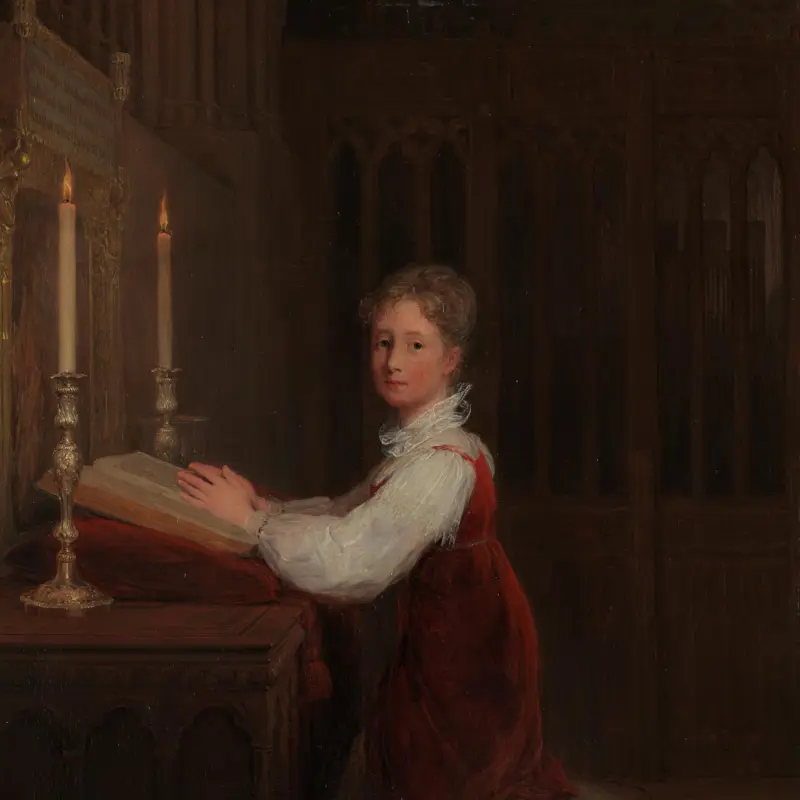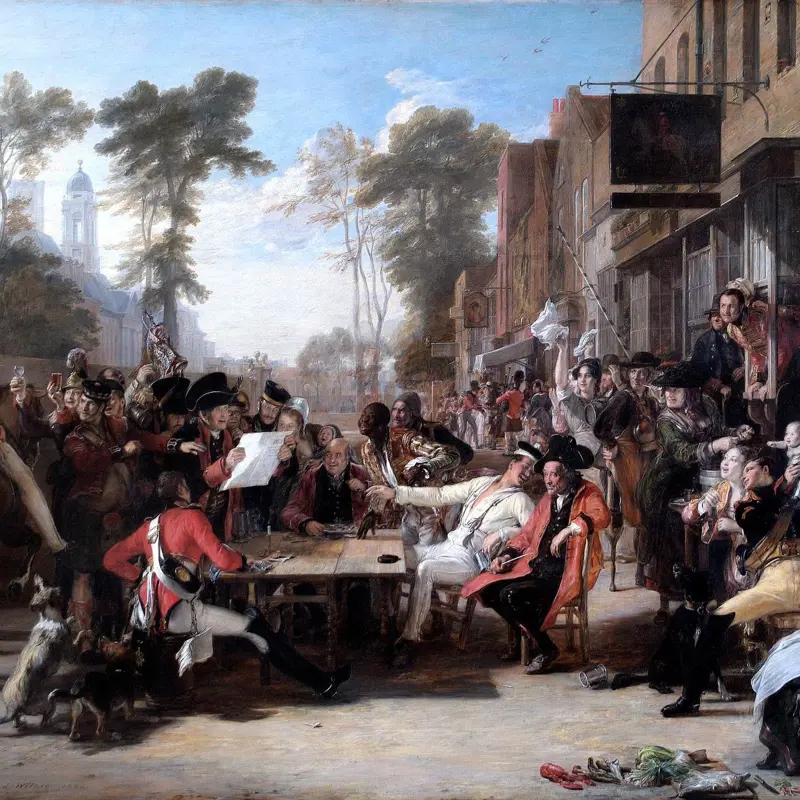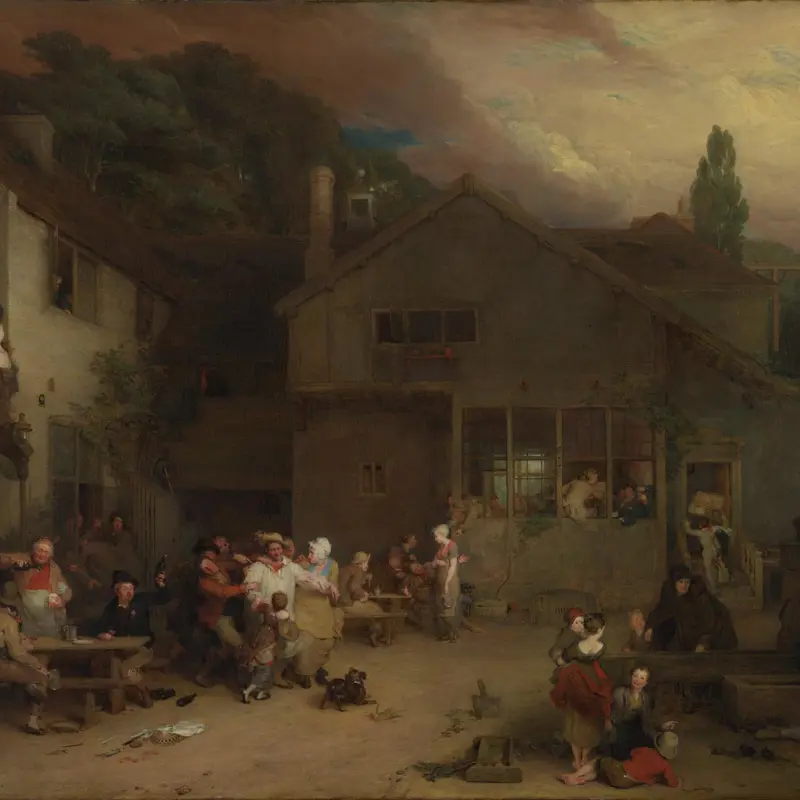Born in Fife, the son of a country minister, David Wilkie began his artistic training at the Trustees' Academy in Edinburgh when he was 15. He achieved early fame with his highly original paintings of episodes from Scottish rural life, including inn scenes, village fairs and weddings. He moved to London in 1805 to study at the Royal Academy Schools, and soon afterwards his work caught the eye of Sir George Beaumont – a major sponsor behind the creation of the National Gallery – for whom he painted The Blind Fiddler ( Tate, London). Later, as a Royal Academician, Wilkie attracted the attention of the Prince Regent, who commissioned a painting. Sir John Julius Angerstein, whose collection formed the cornerstone of the National Gallery, also became a patron.
Wilkie drew his greatest inspiration from the work of Dutch and Flemish painters such as Adriaen van Ostade, David Teniers and Rembrandt. Taking his cue from their pictures he imbued his paintings with plenty of narrative detail, a strong sense of drama, psychological insight and subtle lighting effects. The National Gallery’s A Young Woman at her Prayer Desk is a perfect example of his ability to convey an intimate scene with delicacy and accurately observed details.
In 1823 Wilkie was appointed King’s Limner for Scotland; between 1825 and 1828 he travelled extensively in Europe, visiting in France, Italy and Spain, where he studied the old masters. He particularly admired the work of Titian, Correggio and Velázquez, which inspired him to tackle historical subjects and adopt a broader manner of painting. 1830 he was appointed Painter in Ordinary to King George IV; he was reappointed by King William IV, who gave him a knighthood, and Queen Victoria. Wilkie’s fame spread beyond Britain to Europe: his work was bought by the Crown Prince of Bavaria for his gallery in Munich, an honour bestowed on no other British artist.
In 1840 Wilkie set off for the Middle East, intent on developing a new way of painting religious subjects informed by the people and landscapes of the modern Holy Land. He died at sea on the return journey – an event his friend Turner recorded in his painting Peace: Burial at Sea (Tate Britain).



